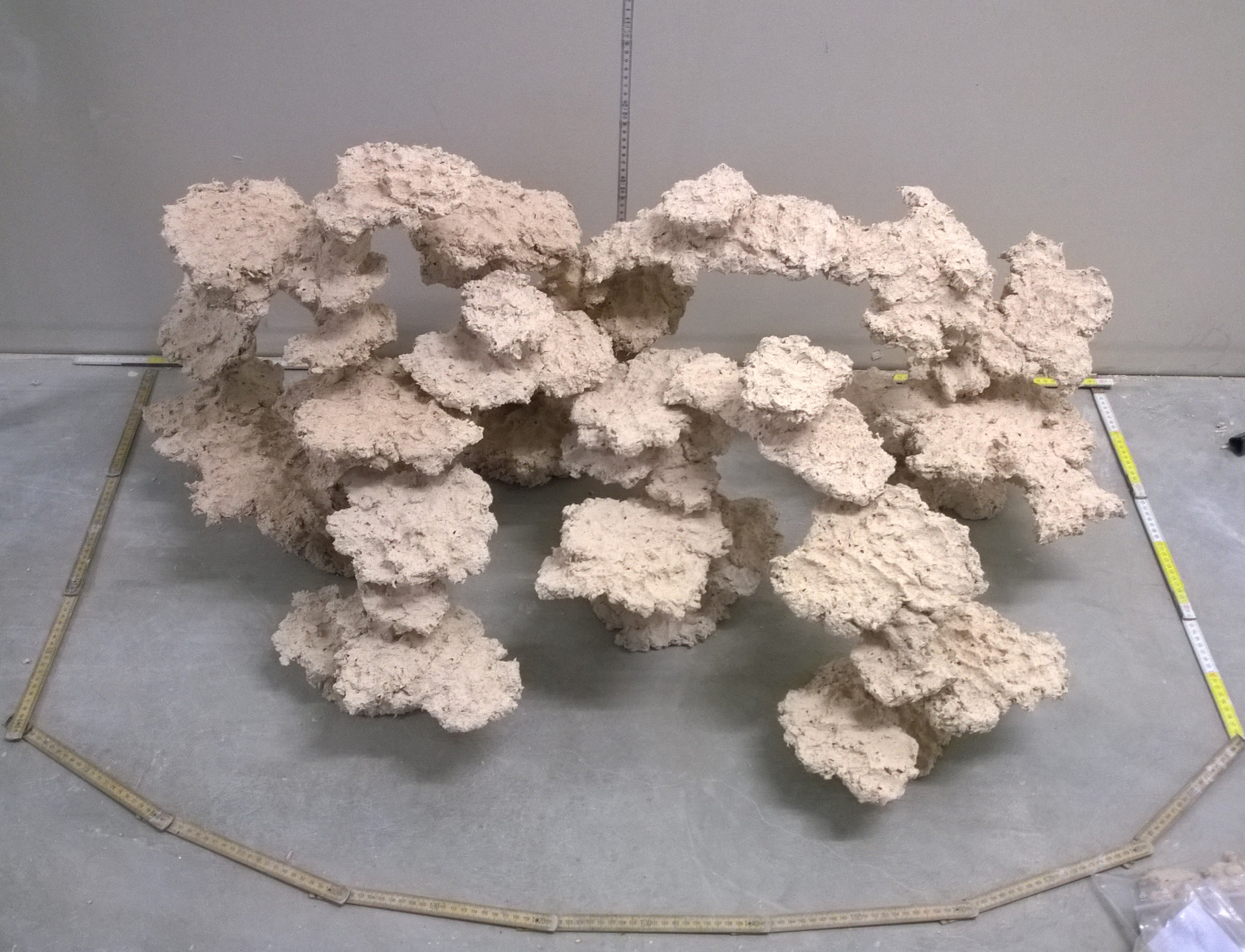Reef ceramics are the heart and soul of a coral reef and can completely replace imported living reef rocks that are forcibly snatched away from their natural habitat.

Corals require a stable eco system in order to be able to live and grow. This eco system is usually created by the corals itself. The corals gradually grow toward the light through their calcium carbonate skeleton. The parts of the corals that die off are transformed into limestone. It is the limestone which in turn offers a biotope and a settlement area for countless bacteria and organisms that help to maintain a stable water quality by decomposing nutrients. The limestone is generally referred to as “living rocks” in aquaristics.
In order to create a stable biological environment in a closed system, the settlement area is of vital importance and absolutely crucial for life to be able to grow. However, it does not matter if that area is natural rock or a different reasonable material. RiffSystem reef ceramics attempts to create such a natural environment without destroying natural reefs.
On the one hand, the ceramics offers a vastly bigger surface than any living reef rock and on the other hand, there are hardly any limits to the design and arrangement of the reef ceramics. We would even go so far to claim that RiffSystem reef ceramics are better than natural rock!
But it is not only the big biological surface that leads to us making such bold statements – it is also the functional design. The light structure helps to improve the current; the water can flow freely through the entire reef and even undercurrents are possible. This means no more sediments or heaps in the sand and the animals are able to use the space underneath the reef as swimming area or as a hide-out.
Reefs made from ceramics are “sterile” and are started using a bacterial supplement. If living reef rocks are used, they are excavated from the ocean in a first step only to be transported to an airport, packed in styrofoam boxes, half dry at tropical temperatures and shipped via air mail to the country of destination. During this entire process, they are packed in a wet environment for several hours. Once they have arrived at their destination airport, they are transported to the local wholesale distributor who will sell it to the retailers. The process takes several days and the vast majority of bacteria, sponges, algae and crustaceans cannot survive this dire journey. Following all that, you can buy the living rock at your retailer and put it into your tank after yet another transport.
Right at the beginning of the introduction phase with living rocks, the dead cells will start to decay. The pollution in and the strain on the “young” fish tank is enormous and can unfortunately not be measured in nitrite, nitrate or phosphate. It takes weeks for those substances to be decomposed. One of the worst-case-scenarios is when these substances settle into the rock permanently and cannot be controlled anymore.
None of the aforementioned problems occur during the introduction phase of sterile ceramic tanks if the ceramics have the proper quality. That also means that the introduction phase here is extremely short; the first inhabitants can move into their new home after only a couple of days.
Additionally, the highly porous structure results in a massive reduction in weight in comparison to a set-up that uses living rocks.

